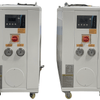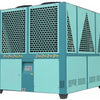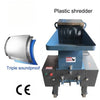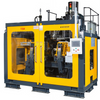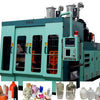Engineering High-Volume Production: A Technical Analysis of the 2.5L Extrusion Blow Molding Machine for Medium-Sized Containers
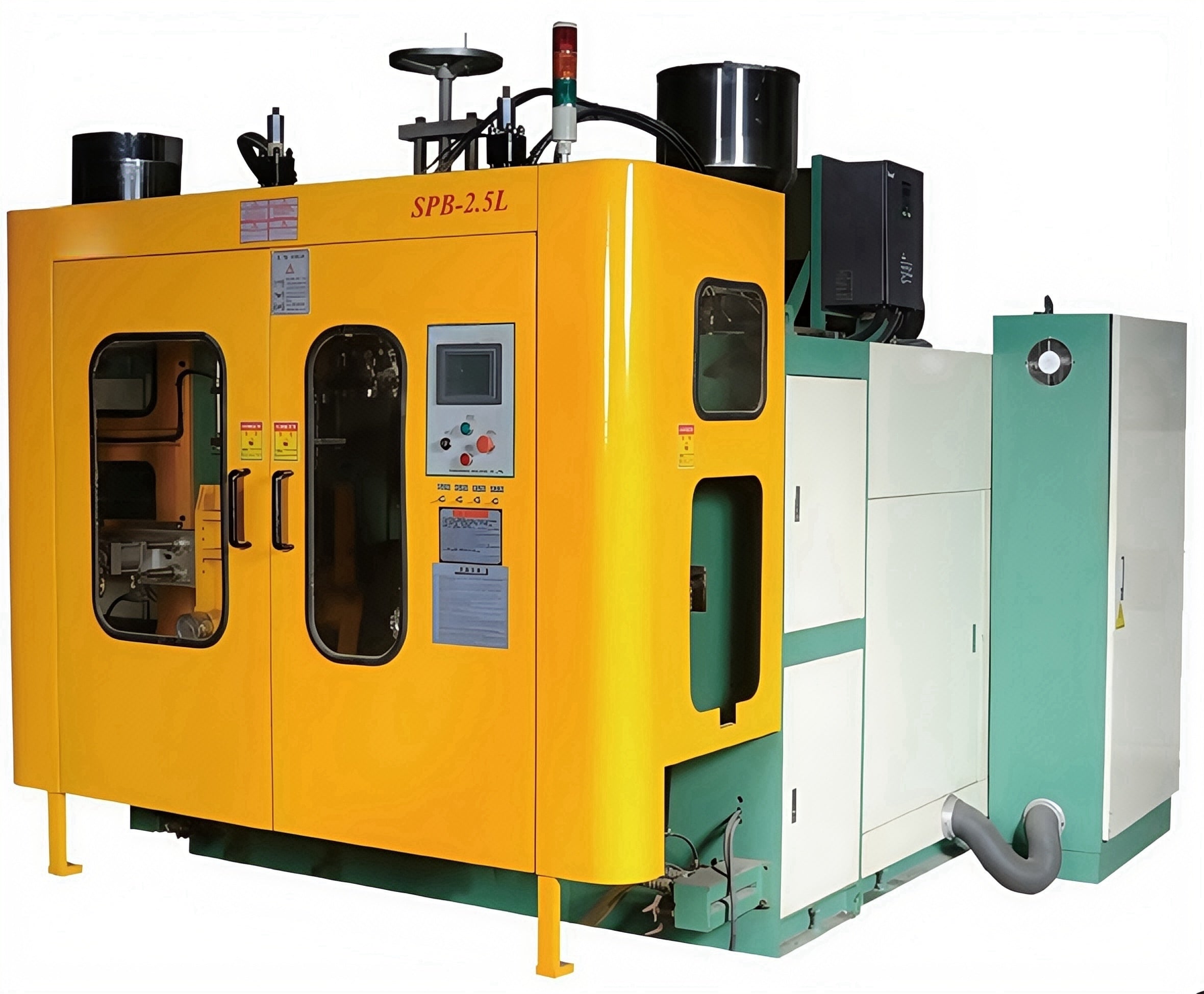
1. Introduction Extrusion Blow Molding (EBM) is a dominant manufacturing process for producing hollow plastic articles, from small medical vials to large industrial tanks. The 2.5L class of EBM machines occupies a vital middle ground, specifically engineered for the efficient, high-throughput production of containers that are too large for ultra-high-speed small-bottle machines but require faster cycles and lower tooling costs than machines designed for very large vessels. These containers, such as laundry detergent jugs, alcohol dispensers, and engine oil bottles, are ubiquitous in consumer markets and demand a balance of durability, cost-effectiveness, and production speed. This paper focuses on the technical specifications, operational workflow, and key engineering features of the modern 2.5L EBM machine, drawing on industry-standard models to illustrate how these systems meet the rigorous demands of high-volume manufacturing.
2. Machine Architecture and Core Components A 2.5L EBM machine is a complex, integrated system designed for robust, continuous operation. Its design prioritizes stability and high output for medium-sized containers.
-
2.1. Extruder Unit: The heart of the machine is a single-screw extruder, sized according to the target output. For a 2.5L machine, a screw diameter of 65mm with an L/D ratio of 25:1 is common, providing sufficient plasticizing capacity (up to 50 kg/h) for materials like HDPE, PP, and PE [3, 4]. The extruder is driven by an 11 kW motor [4] and features multiple heating zones (typically 7) with a total heating power of 11-15 kW [3, 4] to ensure precise temperature control and homogeneous melt quality.
-
2.2. Parison Die Head: The molten plastic is extruded through a die head to form the parison. For 2.5L applications, die heads are often designed for single-layer extrusion but can be configured for 2-3 layer co-extrusion to create containers with enhanced barrier properties or aesthetic layers [2]. The die head includes its own heating system (e.g., 15 kW [4]) to maintain melt temperature.
-
2.3. Clamping and Mold Unit: This unit provides the force necessary to close the mold and pinch off the parison. A 2.5L machine typically features a hydraulic clamping system with a force of 25-70 kN [4], depending on the mold size and number of cavities. The machine often operates with a double-station (two molds) configuration [2, 4], allowing one mold to cool while the other is being filled, significantly increasing overall production efficiency. Mold dimensions (e.g., 500mm x 400mm [4]) and maximum opening distance (e.g., 430mm [3]) are designed to accommodate containers up to 5L or 10L.
-
2.4. Blow Pin and Air System: Compressed air (typically at 0.6 MPa [3, 4]) is injected via a blow pin to inflate the parison within the closed mold. The air consumption is relatively low (e.g., 0.5 m³/min [4]), reflecting the moderate size of the containers.
-
2.5. Drive and Control System: Modern 2.5L machines utilize a hybrid approach, combining hydraulic power for clamping with electric servo motors for precise parison control and auxiliary movements. The entire process is governed by a Programmable Logic Controller (PLC) [4], allowing for precise cycle timing, parameter adjustments, and user-friendly operation via a touchscreen interface, often available in multiple languages [4].
3. Operational Parameters and Performance Metrics The performance of a 2.5L EBM machine is defined by its ability to produce containers rapidly and consistently.
-
3.1. Production Capacity: Output is measured in Bottles Per Hour (BPH). While dependent on container size and complexity, a well-optimized 2.5L machine can achieve production rates of 100 BPH or more for standard containers [4]. Some high-speed models designed for smaller volumes (e.g., 0.3L-1L) within this machine class can exceed 700 BPH [1].
-
3.2. Cycle Time: Cycle time is minimized through efficient cooling and the use of double-station molds. For a 2.5L container, a typical cycle might range from 20 to 60 seconds, depending on wall thickness and material.
-
3.3. Material and Energy Consumption: The machine is designed for energy efficiency, with total power consumption (extruder, hydraulics, heating) around 22 kW for a typical 65mm screw model [4]. The use of recycled material or integrated scrap recycling systems can further reduce material costs.
4. Advanced Features for Quality and Efficiency To meet market demands for high-quality, defect-free containers, 2.5L machines incorporate several advanced features.
-
4.1. Wall Thickness Control: While not always as sophisticated as multi-point systems on smaller machines, basic parison programming is used to ensure adequate material distribution, particularly at the base and neck of the container for structural integrity.
-
4.2. Multi-Layer Capability: The option for 2-3 layer co-extrusion allows manufacturers to produce containers with an inner layer for chemical resistance, a middle structural layer, and an outer layer for printability or aesthetics [2].
-
4.3. Integrated Automation and Quality Control: Advanced models can be equipped with optional automated systems for:
- Trimming: Automatically removing flash from the neck and base.
- Leak Testing: Ensuring container integrity.
- Weighing: Monitoring and controlling bottle weight for consistency.
- Visual Inspection: Detecting surface defects.
- In-Mold Labeling (IML): Applying labels during the molding process [2].
5. Material Compatibility and Key Applications The 2.5L EBM machine's strength lies in its ability to process common, cost-effective thermoplastics for high-volume applications.
-
5.1. Primary Materials:
- High-Density Polyethylene (HDPE): The most common material due to its excellent chemical resistance, stiffness, and low cost. Ideal for detergents and bleach.
- Polypropylene (PP): Offers good chemical resistance and higher temperature tolerance than HDPE, suitable for hot-fill applications or containers requiring clarity.
- Polyethylene (PE): A general term often referring to HDPE or MDPE in this context.
-
5.2. Dominant Market Applications:
- Household Chemicals: Large bottles for laundry detergent, fabric softener, dish soap, and surface cleaners [2, 3].
- Automotive Fluids: Containers for engine oil, transmission fluid, and antifreeze [2, 4].
- Industrial & Agricultural Chemicals: Jugs for pesticides, herbicides, and industrial solvents [2].
- Food & Beverage: Bottles for edible oils, vinegar, and syrups (using food-grade resins).
- Alcohol & Sanitizers: Dispenser bottles for isopropyl alcohol and hand sanitizers [3, 4].
6. Machine Variants and Configurations Manufacturers offer 2.5L EBM machines in various configurations to suit different production needs.
-
6.1. Semi-Automatic vs. Fully Automatic: Semi-automatic machines require operator intervention for tasks like mold loading/unloading, while fully automatic systems integrate robotics for a complete, hands-off production line [4].
-
6.2. Single-Station vs. Double-Station: As mentioned, double-station machines offer higher productivity by allowing concurrent molding and cooling cycles [4].
-
6.3. Hydraulic vs. Hybrid Servo-Hydraulic: Traditional hydraulic systems are robust and cost-effective. Hybrid systems, incorporating servo motors for precision movements, offer better energy efficiency and control, representing the current technological trend [2].
7. Global Manufacturing and Support The 2.5L EBM machine is a globally traded piece of industrial equipment. Major manufacturers, particularly in regions like Hebei, China [2, 4], supply these machines worldwide to markets in North America, Europe, Africa, and Asia. A key competitive advantage for suppliers is the provision of comprehensive after-sales service, including on-site installation, technician training, and readily available spare parts [4], which is crucial for minimizing downtime in high-volume production environments.
8. Challenges and Future Outlook Despite its maturity, the technology continues to evolve.
-
8.1. Current Challenges:
- Energy Consumption: While improving, hydraulic systems still consume significant energy.
- Labor Dependency: Semi-automatic models require skilled operators.
- Material Limitations: Processing more advanced or sustainable materials (e.g., bio-resins) may require machine modifications.
-
8.2. Future Trends:
- Increased Electrification: A shift towards all-electric or more advanced hybrid servo systems for greater precision and lower operating costs.
- Enhanced Automation: Greater integration of AI and machine learning for predictive maintenance and real-time quality optimization.
- Sustainability Focus: Development of machines optimized for recycled content and new biodegradable polymers.
- Connectivity: Integration with Industry 4.0 platforms for remote monitoring and data-driven production management.
9. Conclusion The 2.5L extrusion blow molding machine is a workhorse of the modern plastics industry, expertly engineered to deliver high-volume, cost-effective production of essential medium-sized containers. Its robust design, centered around a powerful single-screw extruder and a hydraulically actuated clamping unit, provides the stability needed for continuous operation. The flexibility to handle common materials like HDPE and PP, combined with options for multi-layer co-extrusion and integrated automation for trimming and quality control, makes it an indispensable asset for manufacturers in the household, automotive, and chemical sectors. While challenges around energy efficiency and automation persist, the ongoing evolution towards hybrid servo drives and smarter, more connected systems ensures that the 2.5L EBM machine will remain a cornerstone of efficient plastic container manufacturing for years to come. Its global availability and strong manufacturer support networks further solidify its position as a reliable and scalable production solution.
-
Đăng trong
extrusion blow molding machine

